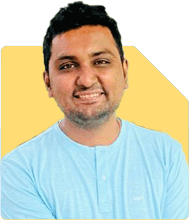Ramalingam Kalirajan |10881 Answers |Ask -Follow
Mutual Funds, Financial Planning Expert - Answered on May 13, 2024
He has an MBA in finance from the University of Madras and is a certified financial planner.
He is the director and chief financial planner at Holistic Investment, a Chennai-based firm that offers financial planning and wealth management advice.... more

Good morning Sir, I retired on 30 April 2024 and recieved around 1cr as retirement benefits. I am not receiving any pension. I am 58 years old how to plan my future investments to recieve minimum 100k from retirement benefits. Kindly help me please. Thank you
Retirement brings a shift in financial priorities, and it's essential to ensure that your retirement benefits are managed effectively to sustain your desired lifestyle. With your retirement benefits totaling around 1 crore, the goal of generating a minimum of 100,000 rupees per month is certainly achievable with careful planning and strategic investment.
Let's delve into crafting a personalized retirement income plan that aligns with your financial goals and aspirations.
Assessing Your Needs:
Understanding your current financial needs and future aspirations is the foundation of any retirement plan. Take some time to reflect on your lifestyle preferences, anticipated expenses, and any specific financial goals you wish to accomplish during retirement. This self-reflection will guide us in designing a customized plan tailored to your unique circumstances.
Creating a Balanced Portfolio:
Diversification is key to managing risk and optimizing returns in retirement. By spreading your retirement benefits across a mix of investment avenues, we can strive for stability, growth, and income generation. We'll explore various asset classes, such as fixed income instruments, equities, and alternative investments, to construct a balanced portfolio that suits your risk tolerance and financial objectives.
Generating Regular Income:
Your objective of generating a minimum of 100,000 rupees per month from retirement benefits requires a strategic approach. We'll focus on income-generating investments, such as fixed deposits, bonds, and dividend-paying stocks or mutual funds. These investments offer regular cash flows that can supplement your retirement income and provide financial stability throughout your retired life.
Managing Withdrawal Strategies:
Systematic Withdrawal Plans (SWPs) from mutual funds can be an effective tool for managing cash flow in retirement. By setting up SWPs, you can establish a regular withdrawal schedule tailored to your income needs while keeping the remaining investment corpus intact for future growth. We'll design a withdrawal strategy that strikes a balance between meeting your short-term income requirements and preserving capital for the long term.
Continued Review and Adjustment:
Retirement planning is not a one-time event but an ongoing process that requires regular review and adjustment. As your financial needs, market conditions, and life circumstances evolve, we'll adapt your retirement income plan accordingly. Through periodic reviews, we'll ensure that your investments remain aligned with your goals and risk tolerance, maximizing the potential for long-term financial success.
Final Thoughts:
Retirement is a significant milestone, and embarking on this journey with a well-thought-out financial plan can set the stage for a fulfilling and worry-free retirement life. Remember, your retirement benefits are a valuable resource that can provide you with the financial freedom to pursue your passions, spend time with loved ones, and explore new experiences.
As a Certified Financial Planner, I'm committed to guiding you every step of the way towards achieving your retirement dreams. Together, we'll create a robust retirement income plan that empowers you to live life on your terms, with confidence and peace of mind.
Best Regards,
K. Ramalingam, MBA, CFP,
Chief Financial Planner,
www.holisticinvestment.in
Let's embark on this financial journey together.
You can reach me through my website mentioned-below.
This platform has restrictions to share the personal contact. Hope you understand.
Best Regards,
K. Ramalingam, MBA, CFP,
Chief Financial Planner,
www.holisticinvestment.in
Visit our website www.holisticinvestment.in.
Navigate to the "Contact Us" section, typically located in the menu bar or footer of the website.
You'll find options to reach out to us, such as a contact form or our contact details, including phone numbers and email addresses.
Fill out the contact form with your details and any specific queries or requirements you have.
Alternatively, you can directly call or email us using the contact information provided on the website.
Once you reach out to us, our team will promptly respond to your query and assist you with scheduling a free consultation or addressing any financial concerns you may have. We look forward to the opportunity to support you in achieving your financial objectives and providing personalized financial planning services tailored to your needs.
Best Regards,
K. Ramalingam, MBA, CFP,
Chief Financial Planner,
www.holisticinvestment.in
You may like to see similar questions and answers below
Abhishek Shah | Answer |Ask -Follow
HR Expert - Answered on Feb 09, 2023
Sanjeev Govila | Answer |Ask -Follow
Financial Planner - Answered on Dec 06, 2023
Ramalingam Kalirajan |10881 Answers |Ask -Follow
Mutual Funds, Financial Planning Expert - Answered on Jul 03, 2024
Ramalingam Kalirajan |10881 Answers |Ask -Follow
Mutual Funds, Financial Planning Expert - Answered on Sep 24, 2024
Ramalingam Kalirajan |10881 Answers |Ask -Follow
Mutual Funds, Financial Planning Expert - Answered on Apr 17, 2025
Dr Dipankar Dutta |1841 Answers |Ask -Follow
Tech Careers and Skill Development Expert - Answered on Dec 14, 2025
Nayagam P P |10854 Answers |Ask -Follow
Career Counsellor - Answered on Dec 14, 2025
Radheshyam Zanwar |6744 Answers |Ask -Follow
MHT-CET, IIT-JEE, NEET-UG Expert - Answered on Dec 14, 2025
Radheshyam Zanwar |6744 Answers |Ask -Follow
MHT-CET, IIT-JEE, NEET-UG Expert - Answered on Dec 14, 2025
Dr Dipankar Dutta |1841 Answers |Ask -Follow
Tech Careers and Skill Development Expert - Answered on Dec 14, 2025
Dr Dipankar Dutta |1841 Answers |Ask -Follow
Tech Careers and Skill Development Expert - Answered on Dec 13, 2025
Dr Dipankar Dutta |1841 Answers |Ask -Follow
Tech Careers and Skill Development Expert - Answered on Dec 13, 2025
Mayank Chandel |2575 Answers |Ask -Follow
IIT-JEE, NEET-UG, SAT, CLAT, CA, CS Exam Expert - Answered on Dec 13, 2025
Radheshyam Zanwar |6744 Answers |Ask -Follow
MHT-CET, IIT-JEE, NEET-UG Expert - Answered on Dec 13, 2025
Mayank Chandel |2575 Answers |Ask -Follow
IIT-JEE, NEET-UG, SAT, CLAT, CA, CS Exam Expert - Answered on Dec 13, 2025
























